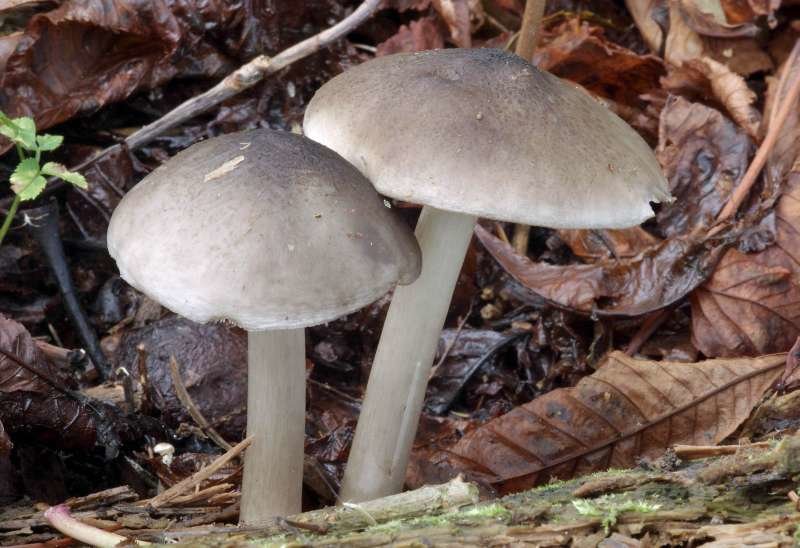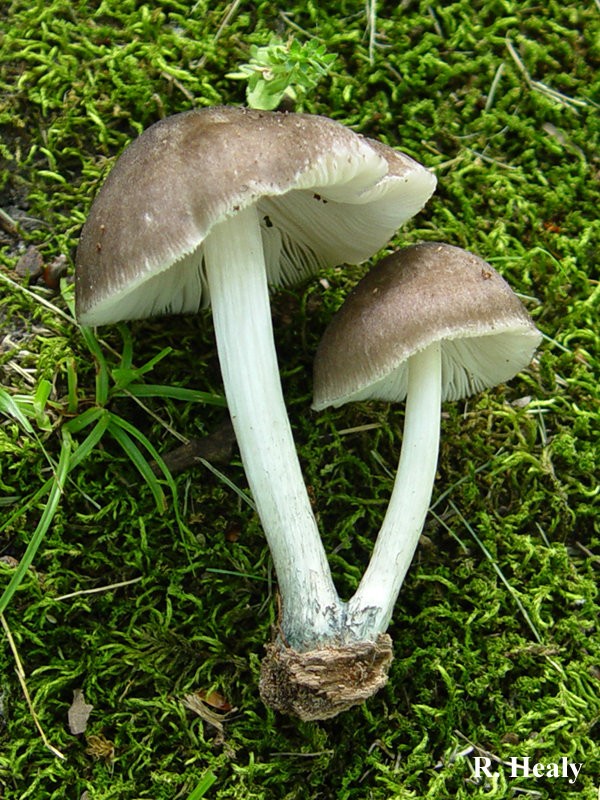Contents
Willow whip (Pluteus salicinus)
- Division: Basidiomycota (Basidiomycetes)
- Subdivision: Agaricomycotina (Agaricomycetes)
- Class: Agaricomycetes (Agaricomycetes)
- Subclass: Agaricomycetidae (Agaricomycetes)
- Order: Agaricales (Agaric or Lamellar)
- Family: Pluteaceae (Pluteaceae)
- Genus: Pluteus (Pluteus)
- Type: Pluteus salicinus (Willow Pluteus)
- Rhodosporus salicinus;
- Pluteus petasatus.
 Willow whip (Pluteus salicinus) is a fungus belonging to the genus Plyutey and the Plyuteev family. Mycologist Vasser describes this type of mushroom as an edible, but little-studied species. A few years later, the same author describes this mushroom as related to the American specimen, and characterizes the willow whip as hallucinogenic. In its composition, several substances were found that provoke the development of hallucinations, including psilocybin.
Willow whip (Pluteus salicinus) is a fungus belonging to the genus Plyutey and the Plyuteev family. Mycologist Vasser describes this type of mushroom as an edible, but little-studied species. A few years later, the same author describes this mushroom as related to the American specimen, and characterizes the willow whip as hallucinogenic. In its composition, several substances were found that provoke the development of hallucinations, including psilocybin.
External Description
The fruiting body of the willow spit is a hat-legged. Its flesh is fragile, thin, watery, characterized by a whitish-gray or white color, in the region of the leg from the inside it is loose, when broken it becomes slightly greenish. The aroma and taste may be inexpressive or rather weak rare.
The hat in diameter ranges from 2 to 5 cm (sometimes – 8 cm), initially has a conical or convex shape. In mature fruiting bodies, it becomes flat-prostrate or flat-convex. In the central part of the cap, a thinly scaly, wide and low tubercle is often noticeable. The surface of the mushroom cap of the willow whip is shiny, radially fibrous, and the fibers are somewhat darker in color than the main shade. The color of the cap of the described mushroom can be grayish-green, brownish-gray, gray-bluish, brown or ash gray. The edges of the cap are often sharp, and in high humidity it becomes striped.
The length of the stem of the fungus varies from 3 to 5 (sometimes 10) cm, and in diameter it usually ranges from 0.3 to 1 cm. It is often cylindrical in shape, longitudinally fibrous, and may be slightly thickened near the base. The structure of the leg is even, only occasionally it is curved, with fragile flesh. In color – white, with a shiny surface, in some fruiting bodies it may have a grayish, olive, bluish or greenish tint. On old fruit bodies, bluish or gray-green spots are often noticeable. The same marks appear with strong pressure on the mushroom pulp.
Mushroom hymenophore – lamellar, consists of small, often arranged plates, which initially have a cream or white color. Mature spores become pinkish or pink-brown. They are broadly ellipsoidal in shape and smooth in texture.

Grebe season and habitat
Active fruiting of willow slugs falls on the period from June to October (and when grown in warm climatic conditions, the fungus bears fruit from early spring to late autumn). The described mushroom species grows mainly in mixed and deciduous forests, prefers humid areas and belongs to the category of saprotrophs. Often found in solitary form. Rarely willow lashes can be seen in small groups (several fruiting bodies in a row). The fungus grows on the fallen leaves of trees, near the roots, willow, alder, birch, beech, linden and poplar. Sometimes willow whip can also be seen on the wood of coniferous trees (including pines or spruces). Willow whips are widely used in Europe, North America, Asia and North Africa. You can also see this type of mushroom in the Caucasus, Eastern Siberia, Kazakhstan, Our Country (European part), in the Far East.
Edibility
Willow whip (Pluteus salicinus) belongs to the edible mushrooms, but its small size, weak, inexpressive taste and rarity of discovery make it impossible to collect this species and use it for food.
Similar types and differences from them
 The ecology and morphological features of the willow spear allow even an inexperienced mushroom picker to distinguish this species from other mushrooms of the described genus. Large bluish or greenish-gray spots are clearly visible on its leg. In mature fruiting bodies, the color acquires a bluish or greenish tint. But all these signs can be more or less pronounced, depending on the place of growth of the fruiting bodies of the willow whip. True, sometimes smaller specimens of deer spit, which have a light color, are associated with this fungus. Under microscopic examination, both specimens can be easily distinguished from each other. The deer spit, similar to the described species, has no buckles on the mycelium. In addition, willow spittles differ from deer spittles in the possibility of visible color changes, as well as in a darker shade of the cap.
The ecology and morphological features of the willow spear allow even an inexperienced mushroom picker to distinguish this species from other mushrooms of the described genus. Large bluish or greenish-gray spots are clearly visible on its leg. In mature fruiting bodies, the color acquires a bluish or greenish tint. But all these signs can be more or less pronounced, depending on the place of growth of the fruiting bodies of the willow whip. True, sometimes smaller specimens of deer spit, which have a light color, are associated with this fungus. Under microscopic examination, both specimens can be easily distinguished from each other. The deer spit, similar to the described species, has no buckles on the mycelium. In addition, willow spittles differ from deer spittles in the possibility of visible color changes, as well as in a darker shade of the cap.
Other information about the mushroom
The generic name of the mushroom – Pluteus comes from the Latin word, translated literally as “siege shield”. The additional epithet salicinus also comes from the Latin word, and in translation means “willow”.









